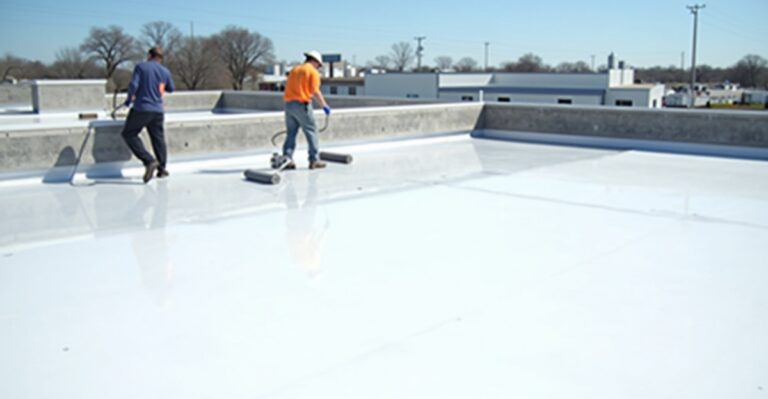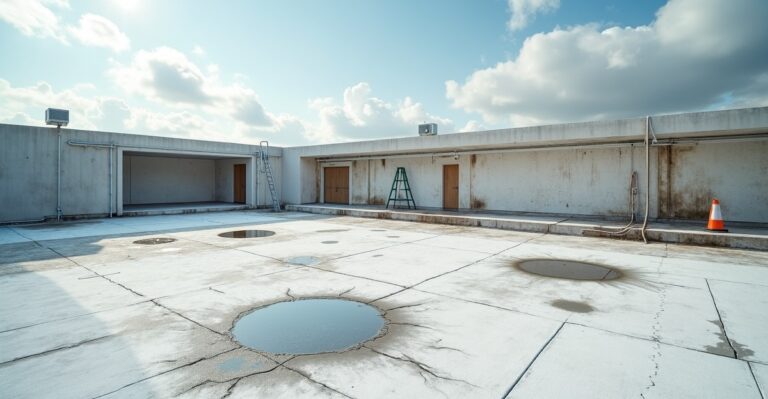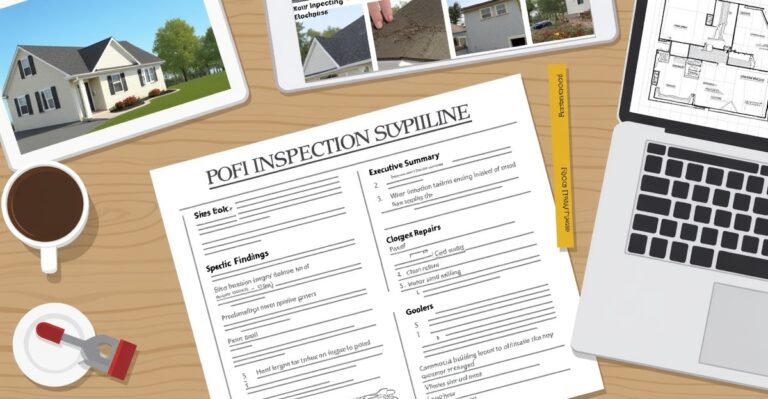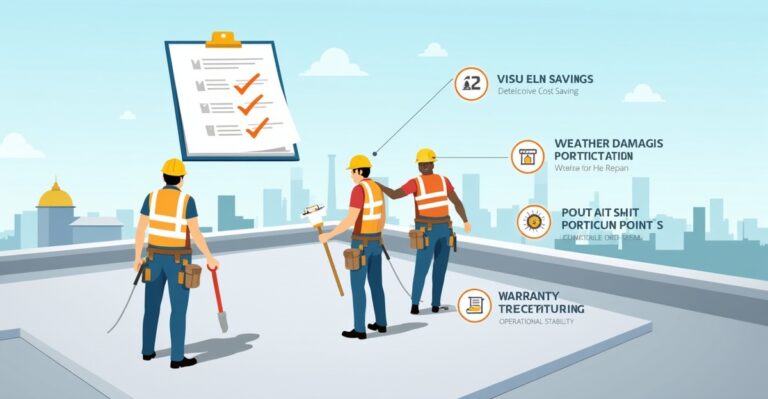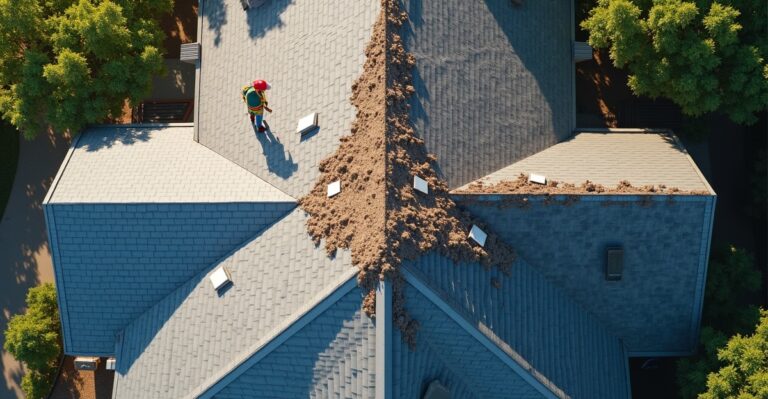Flat Roof Problems Every Owner Should Know
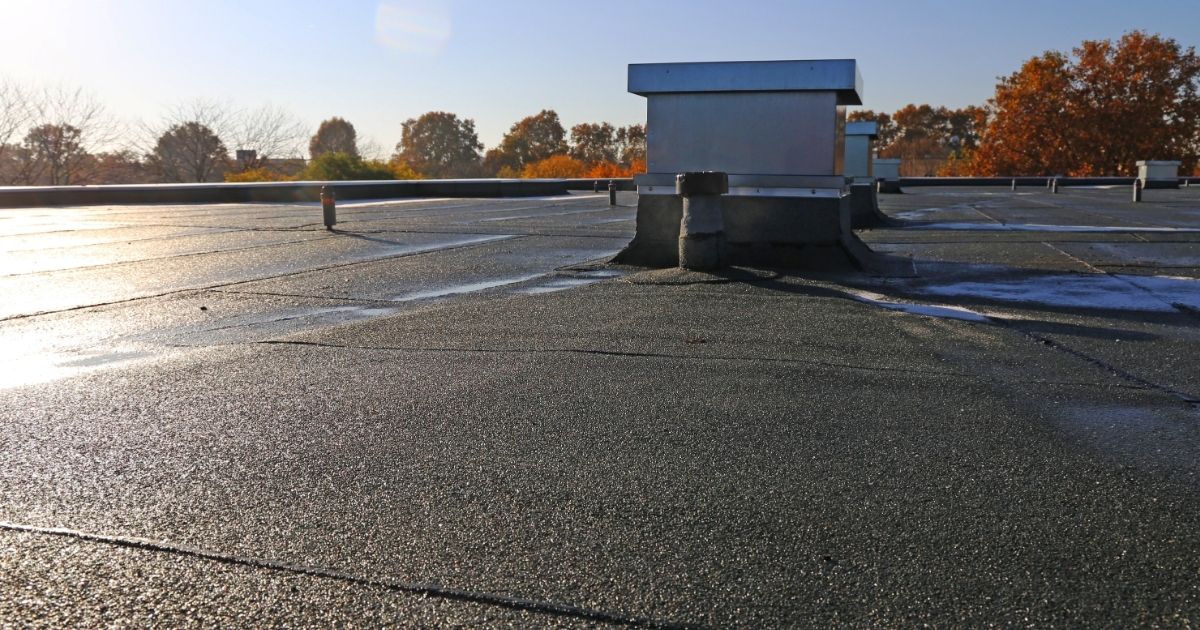
Flat roofs offer a sleek, modern look—but they also come with their own set of challenges. Whether you’re managing multiple commercial properties or protecting your family home, understanding the common flat roof issues can save you time, money, and major headaches down the line.
In this guide, we’ll break down the most frequent flat roof problems, what causes them, how they impact different types of properties, and what you can do to prevent costly repairs. You’ll also find practical advice on when to call a professional, how much repairs typically cost, and what to expect during an inspection.
Here’s what we’ll cover:
- Why Flat Roofs Require Special Attention
- Common Flat Roof Issues and What Causes Them
- How These Issues Affect Commercial vs. Residential Properties
- When to Call a Professional (and What to Expect)
- Cost Considerations for Flat Roof Repairs
- How to Prevent Flat Roof Problems in the Future
- Conclusion: Take Control of Your Flat Roof’s Lifespan
First, let’s understand why flat roofs tend to have unique maintenance needs compared to sloped roofing systems.
Why Flat Roofs Require Special Attention
Flat roofs may look simple, but they demand more attention than most property owners expect. Unlike sloped roofs that shed water naturally, flat roofs rely heavily on precise construction and drainage to prevent issues like water pooling and leaks. Even a small problem—like a blocked drain or worn-out seal—can lead to bigger damage if left unchecked.
The biggest challenge with flat roofs is how they handle water. Because they don’t have a steep pitch, water doesn’t run off as easily. If the drainage system is poorly designed or not maintained, you might notice ponding water on the roof after a heavy rain. This standing water can accelerate membrane deterioration, lead to interior leaks, and even cause structural stress over time.
Another concern is exposure. Flat roofs typically receive more direct sunlight throughout the day. That means more wear and tear from UV damage to roofing materials, especially in warmer climates. Over time, heat and sun exposure can cause the roofing surface to crack, blister, or separate—especially in materials like modified bitumen or single-ply membranes.
Flat roofs are particularly susceptible to debris buildup—which can block drain systems and create flat roof drainage problems similar to those discussed on the U.S. DOE cool‑roof page.
When that happens, drainage slows down, and small issues quickly escalate. In commercial buildings with rooftop equipment or solar panels, flat roofs have even more penetrations, which adds to the risk of leaks and flashing failures.
The takeaway: Flat roofs work hard and wear down fast if they’re not properly maintained. Their design makes them more vulnerable to drainage issues, sun exposure, and surface damage—all of which can lead to expensive repairs or early replacements. That’s why staying ahead of the most common flat roof issues is so important, whether you manage a portfolio of properties or own a single home.
Up next, let’s break down the specific problems to watch for—and how to spot them early.
Common Flat Roof Issues and What Causes Them
Flat roofs have a reputation for being durable and efficient—but like any roofing system, they’re not without vulnerabilities. Below are the most common flat roof issues we see across residential and commercial properties, along with what causes them, what to watch for, and why early action matters.
Leaks and Water Infiltration
If you’re wondering, “Why does my flat roof keep leaking?”—you’re not alone. Leaks are the number one complaint we hear from both homeowners and property managers. The culprits? Seam failures, punctures, and worn-out membranes.
Over time, roofing materials can crack, shrink, or pull away from seams—especially if exposed to constant sun or temperature swings. Foot traffic, falling debris, or even misplaced tools can cause punctures that allow moisture to seep through. Once water gets underneath the surface, it can damage insulation, rot structural decking, and lead to mold or interior leaks.
Early signs: Discoloration on ceilings, bubbling paint, musty smells, or visible cracks on the roof surface.
Ponding Water
One of the biggest red flags on any flat roof is standing water that remains after 48 hours—commonly known as ponding water—which signals drainage issues. This typically happens due to a poor drainage slope or clogged drains and scuppers.
While it might not seem urgent, ponding water puts long-term pressure on your roofing system. It breaks down materials, adds extra weight, and increases the chance of leaks. Worse, when temperatures drop, that water can freeze and cause expansion-related cracks.
Early signs: Water pooling in low spots, slow-draining gutters, or staining around rooftop puddles.
Flashing Failures
Flashing protects the vulnerable joints around your roof’s edges, vents, HVAC units, and skylights. When it fails—whether due to improper installation, age, or shifting materials—it creates an easy entry point for water.
We often find flashing deterioration as the hidden cause behind what looks like a random leak. It’s especially common in older commercial buildings and homes with complex roof features.
Early signs: Rusted or lifted flashing, separation at seams, and leaks near walls or equipment bases.
UV and Weather Damage
Flat roofs endure constant exposure to the elements—especially the sun. Over time, UV damage to roofing materials can cause fading, brittleness, or surface cracking. Add in heavy rain, hail, wind, and freeze-thaw cycles, and your roof takes a year-round beating.
Wind uplift is another risk, particularly during storms. If sections of the roof lift even slightly, it can break the watertight seal, exposing the layers underneath.
Early signs: Cracked or brittle membrane surfaces, lifted edges, or loss of granules on older coatings. Consider a roof coating to help protect and extend the life of your roofing system.
Blistering and Membrane Damage
Roof membrane blistering looks like bubbles or raised sections on the roof surface. It’s caused by trapped moisture or air beneath the membrane—often a result of poor installation, age, or extreme heat exposure.
Blistering weakens the membrane, making it more prone to tears and leaks. This is especially problematic in modified bitumen or single-ply roofing systems when not maintained properly.
Early signs: Swollen or raised areas on the membrane, cracking near blisters, or soft spots underfoot.
Energy Efficiency Problems
A less obvious—but costly—problem is poor insulation or failing reflective coatings. When your flat roof can’t regulate temperature well, it can drive up energy bills for heating and cooling.
Many older flat roofs lack modern energy-efficient roofing upgrades. If the roof’s coating is faded or the insulation is compressed or waterlogged, your property could be losing energy without you realizing it.
Early signs: Rising utility bills, uneven indoor temperatures, or signs of worn or patchy reflective surfaces.
Solar Panel or Equipment Complications
If your flat roof supports solar panels, satellite dishes, or HVAC units, each of those adds risk. Improper mounting, poor sealing, or movement over time can lead to leaks, especially around bolts and brackets.
We often perform solar panel detach and reset services during roof repairs or replacements—an important step given how solar panels affect roofing systems over time.
Early signs: Leaks near mounting points, rust around brackets, or visible lifting of attached equipment.
Key takeaway: Flat roof issues may start small, but they rarely stay that way. Whether it’s a clogged drain or UV-damaged membrane, identifying these problems early—and knowing what causes them—can prevent major damage, save you money, and extend the life of your roof.
In the next section, we’ll look at how these issues show up differently in commercial vs. residential settings—because not every flat roof problem affects properties the same way.
How These Issues Affect Commercial vs. Residential Properties
Flat roof problems may look the same on the surface, but the impact can be very different depending on whether you’re managing a large commercial facility or caring for your home. Understanding how these issues affect your specific type of property helps you prioritize repairs, avoid unnecessary costs, and protect what matters most—whether that’s your tenants, your bottom line, or your family’s comfort.
Commercial Properties
In commercial settings, flat roof problems often carry broader consequences. A leak on a retail center, office building, or multi-family complex isn’t just about water damage—it’s about operational disruption, liability risks, and code compliance.
For example, if ponding water leads to structural damage or mold, you could face safety violations or insurance complications. Worse, it might trigger tenant complaints, lost revenue, or failed inspections. In regulated industries like healthcare, education, or hospitality, even minor roof issues can affect your licensing status or trigger costly emergency repairs.
We’ve seen many common flat roof problems for commercial buildings escalate due to delayed maintenance or unaddressed drainage failures. Non-compliance with roofing code requirements—such as improper slope or outdated materials—can lead to fines or denied insurance claims.
Warning signs to watch for:
- Repeated leaks near tenant units or equipment
- Flat roof surfaces with standing water or visible deterioration
- Failed roof inspections or notices from regulatory bodies
- Increased HVAC costs due to insulation breakdown
The bottom line: For commercial owners, a flat roof problem isn’t just a maintenance issue—it’s a business risk. Staying ahead of inspections and working with a licensed contractor who understands multi-site compliance is key to protecting your investment.
Residential Properties
For homeowners, flat roof issues tend to hit closer to home—literally. A small leak may start as a ceiling stain but can quickly lead to damaged drywall, warped flooring, or even electrical hazards. And unlike commercial properties, repairs often come straight out of your pocket.
Flat roofs on homes are especially vulnerable to long-term energy efficiency problems. If the roof insulation is wet or the reflective coating is worn down, you may notice rising utility bills or hot/cold spots inside the house. Over time, moisture issues can lead to wood rot, attic mold, or roof deck damage that shortens the roof’s lifespan.
And if you’re thinking of selling? Visible roof wear, interior water damage, or poor drainage design can negatively affect curb appeal—and more importantly, your asking price. Most buyers will request an inspection, and roof damage can significantly impact property resale value.
Red flags to look out for:
- Stained ceilings or bubbling paint in upper rooms
- Unexplained spikes in heating or cooling costs
- Debris buildup or ponding water on your roof
- Soft or spongy areas underfoot on the roof surface
In short, a neglected flat roof can quickly turn into a budget-busting repair—and a stressful homeowner experience. But with proactive care and honest advice, many of these issues can be caught early and handled affordably.
When to Call a Professional (and What to Expect)
Some flat roof issues can be temporarily managed with quick fixes—like clearing a clogged drain or resealing a minor crack—but many problems go deeper than what you can see on the surface. Knowing when to call a professional isn’t just about convenience—it’s about protecting your property from long-term damage and unnecessary costs.
Emergency vs. Preventative Repairs
If water is actively leaking into your home or building, or if you’re seeing pooling water, blistering, or structural sagging, it’s time to act fast. These are signs of serious damage that require emergency flat roof repair services. Waiting too long can turn a small repair into a full replacement—or worse, compromise the integrity of your entire structure.
But you don’t have to wait for things to go wrong. Many costly repairs are preventable with routine inspections and upkeep. Preventative roof maintenance—like resealing seams, clearing drains, and reapplying coatings—can add years to your roof’s lifespan and save you thousands in unexpected repairs.
At RayPro Roofing, we help you plan ahead with proactive maintenance programs that reduce risk and give you peace of mind—whether you’re managing a large facility or taking care of your family home.
What to Expect from a Roof Inspection
A professional flat roof inspection goes far beyond a quick glance. When we inspect a roof, we’re looking for signs that may not be visible to the untrained eye—things like hidden moisture, membrane degradation, or weak spots under equipment mounts.
Here’s what a typical RayPro inspection includes:
- Visual Assessment: Checking the membrane, flashing, edges, and penetrations for damage or wear.
- Drainage Review: Identifying signs of standing water, blocked scuppers, or poor slope design.
- Moisture Detection: Using tools like infrared cameras or core sampling (when needed) to detect trapped water.
- Structural Observations: Noting any movement, ponding patterns, or risk factors that could compromise the roof.
After the inspection, we’ll walk you through our findings, answer your questions, and give you an honest, no-pressure recommendation—whether that’s a simple fix, a preventative upgrade, or a full repair plan.
Questions to Ask a Flat Roofing Contractor
Before hiring anyone to work on your roof, you should feel confident in their experience and approach. Here are a few key questions to ask before hiring a flat roof contractor:
- Are you licensed, insured, and experienced with flat roofing systems?
- Do you offer both commercial and residential flat roof services?
- Can you provide references or examples of similar projects?
- What warranties or guarantees do you offer?
- How do you handle weather delays or emergency situations?
- Do you provide detailed quotes and explain the scope of work clearly?
At RayPro Roofing & General Contracting, we’ve spent over 17 years earning the trust of property owners across 17 states. We believe in clear communication, upfront pricing, and doing the job right the first time.
Cost Considerations for Flat Roof Repairs
One of the most common questions we get from property owners is, “How much will this cost?” And the honest answer is—it depends. The cost to repair a flat roof leak or replace a damaged section varies based on several key factors, including the type of building, the extent of damage, and the materials involved. Let’s break it down so you know what to expect.
What Affects Pricing
Several elements influence the cost of flat roof repairs:
- Roof Size: Larger roofs naturally require more materials and labor. A leak on a small residential roof might be a quick fix, while the same issue on a warehouse or school could require significant work.
- Material Type: The cost of repairing modified bitumen, TPO, EPDM, or built-up roofing systems can differ significantly. Some materials are easier (and cheaper) to repair than others.
- Extent of Damage: Minor leaks around a vent may cost a few hundred dollars, while widespread membrane damage or structural issues could run into the tens of thousands.
- Access & Complexity: Multi-story buildings, rooftop equipment, or hard-to-reach areas increase labor time and safety requirements, which adds to the total cost.
- Urgency: Emergency repairs often come with higher rates, especially during severe weather or outside regular business hours.
Typical Repair and Replacement Ranges
While every project is different, here are general ranges based on our experience across residential and commercial jobs:
Residential Flat Roofs:
- Small repairs (e.g., flashing or minor punctures): $500 – $1,500
- Moderate repairs (e.g., blistering, ponding): $2,000 – $5,000
- Full replacement (based on size and material): $8,000 – $20,000+
Commercial Flat Roofs:
- Localized repairs: $1,500 – $7,500
- Partial re-roofing or membrane replacement: $10,000 – $50,000
- Full replacement: $50,000 – $250,000+
(Source: Based on RayPro’s historical project data across 17 states.)
Keep in mind, flat roof repair cost for commercial buildings is usually higher due to code requirements, logistics, and square footage.
Can Insurance Help Offset Costs?
In many cases, insurance can cover flat roof repairs—especially if the damage is sudden and caused by a covered event like wind, hail, or a fallen tree. However, wear and tear, neglect, or old age usually aren’t covered.
Here’s how to make the most of your policy:
- Document damage early. Take photos, save receipts, and note the timeline of the issue.
- Schedule a professional inspection. RayPro provides inspection reports that can support your insurance claims for roof damage.
- Check your policy limits. Look for exclusions, depreciation clauses, and deductibles that could affect your out-of-pocket cost.
If you’re unsure whether you qualify, we can walk you through the process and even coordinate directly with your adjuster to make things easier.
How to Prevent Flat Roof Problems in the Future
Flat roof issues don’t usually happen overnight. Most of the time, they’re the result of small problems that go unnoticed—or ignored—until they turn into expensive repairs. The good news? With regular maintenance and a clear understanding of your warranty, you can catch early signs of trouble and extend the life of your roof by years.
Flat Roof Maintenance Checklist
A proactive maintenance plan is one of the smartest investments you can make—whether you’re managing a large commercial facility or looking after your home. Here’s a practical flat roof maintenance checklist we recommend following:
- Inspect your roof twice a year. Spring and fall are ideal. Look for cracks, blistering, loose seams, or pooling water.
- Clear debris regularly. Remove leaves, branches, and dirt that can clog drains or hold moisture on the surface.
- Check drainage systems. Ensure gutters, downspouts, and scuppers are free of obstructions and draining properly.
- Inspect flashing and penetrations. Pay close attention to areas around HVAC units, skylights, vents, and walls—these are common leak points.
- Examine the surface membrane. Look for signs of UV damage, bubbling, or worn reflective coatings.
- Document and track issues. Take photos, note changes, and keep a record of all inspections and repairs.
Following this checklist won’t just help you spot potential issues early—it can also support your case if you need to file an insurance claim or warranty request down the road.
Understand Your Roof Warranty and Service Plan
Every roofing system comes with some form of warranty—but not all warranties are created equal. It’s important to know what yours actually covers, and just as important, what actions might void it.
Here are key roof warranty considerations to keep in mind:
- Coverage Scope: Does your warranty cover labor, materials, or both? Is it full or prorated over time?
- Length of Warranty: Most flat roof warranties range from 10 to 30 years depending on the material and manufacturer.
- Required Maintenance: Many warranties require annual or bi-annual inspections to remain valid. Skipping them could void your coverage.
- Who Can Perform Repairs: Some warranties specify that only certified contractors can work on the roof. DIY fixes or using unqualified vendors may result in denied claims.
- Transferability: If you’re selling your home or property, check if the warranty can transfer to the new owner. This can be a selling point.
At RayPro Roofing, we not only help you understand your warranty—we offer ongoing service plans that keep your roof in top shape and your coverage intact. It’s about long-term protection, not just one-time fixes.
Conclusion: Take Control of Your Flat Roof’s Lifespan
Flat roofs are efficient, durable, and cost-effective—but only when they’re properly maintained. As we’ve covered, the most common flat roof issues—from ponding water and flashing failures to UV damage and insulation loss—can lead to major problems if left unchecked. Whether you’re managing a commercial property or protecting your home, staying proactive is the key to avoiding costly surprises.
Regular inspections, timely repairs, and a solid maintenance plan can extend the life of your flat roof by years. And knowing what to look for—and when to bring in a professional—gives you the confidence to act before small issues become expensive emergencies.
At RayPro, we’ve spent more than 17 years helping property owners like you keep their flat roofs performing at their best. We bring clear communication, honest assessments, and expert craftsmanship to every project—no gimmicks, no pressure.
Frequently Asked Questions
Flat roofs are more prone to leaks because they lack the natural runoff that pitched roofs provide. Common causes include membrane cracks, seam separation, flashing deterioration, or punctures from foot traffic or equipment. If leaks keep returning, it’s likely due to underlying issues that haven’t been fully addressed—such as poor drainage or aging materials.
Water pooling—also known as ponding—happens when the roof doesn’t drain properly. This can be caused by a poor slope design, clogged drains or scuppers, or structural settling over time. If standing water remains for more than 48 hours, it can accelerate membrane breakdown and lead to leaks.
Costs vary widely depending on the size of the roof, type of material, and extent of damage. Small residential repairs may range from $500–$1,500, while large commercial repairs or replacements can cost $10,000 to $100,000 or more. For accurate pricing, a professional inspection is always the best first step.
In many cases, yes. If your flat roof needs major repairs or replacement, solar panel detach and reset may be required to access the membrane underneath. A qualified contractor will coordinate the safe removal and reinstallation of your system to avoid damage to both the panels and the roof.
Warning signs include visible ponding water, damaged flashing, cracks or bubbles in the membrane, rusted rooftop equipment bases, or insulation issues affecting energy performance. Regular inspections and documented maintenance are key to passing roofing compliance checks and avoiding fines or insurance issues.

